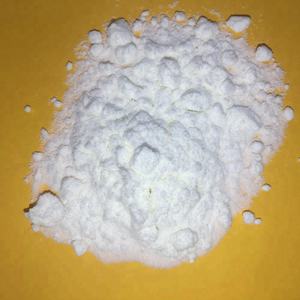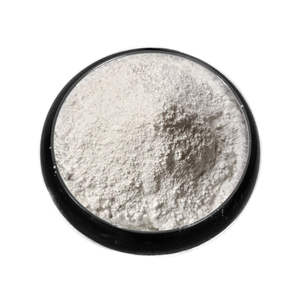1. Fundamental Structure and Quantum Features of Molybdenum Disulfide
1.1 Crystal Architecture and Layered Bonding System
(Molybdenum Disulfide Powder)
Molybdenum disulfide (MoS ₂) is a transition metal dichalcogenide (TMD) that has actually become a foundation product in both timeless commercial applications and advanced nanotechnology.
At the atomic level, MoS ₂ crystallizes in a split structure where each layer includes an airplane of molybdenum atoms covalently sandwiched between 2 airplanes of sulfur atoms, developing an S– Mo– S trilayer.
These trilayers are held together by weak van der Waals pressures, permitting very easy shear between nearby layers– a residential or commercial property that underpins its phenomenal lubricity.
One of the most thermodynamically steady phase is the 2H (hexagonal) stage, which is semiconducting and exhibits a straight bandgap in monolayer type, transitioning to an indirect bandgap in bulk.
This quantum confinement effect, where digital buildings alter considerably with thickness, makes MoS TWO a design system for examining two-dimensional (2D) products beyond graphene.
On the other hand, the less common 1T (tetragonal) stage is metallic and metastable, often generated with chemical or electrochemical intercalation, and is of interest for catalytic and power storage applications.
1.2 Electronic Band Structure and Optical Feedback
The digital homes of MoS two are very dimensionality-dependent, making it an unique platform for exploring quantum phenomena in low-dimensional systems.
Wholesale type, MoS two behaves as an indirect bandgap semiconductor with a bandgap of around 1.2 eV.
Nonetheless, when thinned down to a solitary atomic layer, quantum arrest results create a shift to a straight bandgap of about 1.8 eV, situated at the K-point of the Brillouin zone.
This shift enables solid photoluminescence and effective light-matter interaction, making monolayer MoS two highly appropriate for optoelectronic tools such as photodetectors, light-emitting diodes (LEDs), and solar cells.
The conduction and valence bands display substantial spin-orbit combining, causing valley-dependent physics where the K and K ′ valleys in energy area can be precisely attended to utilizing circularly polarized light– a phenomenon known as the valley Hall effect.
( Molybdenum Disulfide Powder)
This valleytronic ability opens brand-new opportunities for information encoding and handling past traditional charge-based electronics.
In addition, MoS ₂ demonstrates solid excitonic impacts at room temperature level because of decreased dielectric screening in 2D form, with exciton binding powers reaching several hundred meV, much going beyond those in standard semiconductors.
2. Synthesis Techniques and Scalable Production Techniques
2.1 Top-Down Peeling and Nanoflake Construction
The seclusion of monolayer and few-layer MoS ₂ began with mechanical peeling, a technique similar to the “Scotch tape technique” utilized for graphene.
This approach yields top notch flakes with very little defects and outstanding electronic buildings, suitable for basic research and model gadget fabrication.
Nevertheless, mechanical peeling is inherently restricted in scalability and side size control, making it improper for commercial applications.
To address this, liquid-phase exfoliation has been created, where mass MoS two is spread in solvents or surfactant solutions and subjected to ultrasonication or shear blending.
This approach generates colloidal suspensions of nanoflakes that can be deposited through spin-coating, inkjet printing, or spray covering, allowing large-area applications such as versatile electronic devices and coatings.
The size, thickness, and issue thickness of the exfoliated flakes depend upon processing criteria, consisting of sonication time, solvent option, and centrifugation speed.
2.2 Bottom-Up Development and Thin-Film Deposition
For applications calling for attire, large-area films, chemical vapor deposition (CVD) has actually come to be the dominant synthesis course for premium MoS two layers.
In CVD, molybdenum and sulfur precursors– such as molybdenum trioxide (MoO ₃) and sulfur powder– are evaporated and reacted on heated substratums like silicon dioxide or sapphire under controlled environments.
By tuning temperature, pressure, gas flow prices, and substratum surface area power, scientists can grow constant monolayers or stacked multilayers with controlled domain name size and crystallinity.
Alternate methods consist of atomic layer deposition (ALD), which offers exceptional thickness control at the angstrom degree, and physical vapor deposition (PVD), such as sputtering, which is compatible with existing semiconductor manufacturing facilities.
These scalable techniques are vital for incorporating MoS ₂ into commercial digital and optoelectronic systems, where harmony and reproducibility are paramount.
3. Tribological Efficiency and Industrial Lubrication Applications
3.1 Devices of Solid-State Lubrication
One of the earliest and most widespread uses MoS ₂ is as a strong lube in environments where liquid oils and oils are ineffective or unwanted.
The weak interlayer van der Waals forces enable the S– Mo– S sheets to move over each other with minimal resistance, leading to a really low coefficient of friction– usually in between 0.05 and 0.1 in completely dry or vacuum cleaner problems.
This lubricity is specifically useful in aerospace, vacuum cleaner systems, and high-temperature equipment, where conventional lubricating substances might evaporate, oxidize, or degrade.
MoS ₂ can be applied as a completely dry powder, bonded covering, or distributed in oils, greases, and polymer compounds to enhance wear resistance and reduce friction in bearings, equipments, and gliding get in touches with.
Its performance is further improved in humid atmospheres due to the adsorption of water molecules that function as molecular lubricating substances between layers, although too much wetness can bring about oxidation and degradation in time.
3.2 Compound Combination and Wear Resistance Improvement
MoS ₂ is frequently included into steel, ceramic, and polymer matrices to produce self-lubricating composites with extensive service life.
In metal-matrix composites, such as MoS ₂-strengthened aluminum or steel, the lubricant phase decreases friction at grain limits and prevents sticky wear.
In polymer compounds, particularly in design plastics like PEEK or nylon, MoS ₂ improves load-bearing capacity and minimizes the coefficient of rubbing without substantially compromising mechanical strength.
These compounds are utilized in bushings, seals, and sliding components in auto, industrial, and marine applications.
Furthermore, plasma-sprayed or sputter-deposited MoS ₂ finishes are utilized in armed forces and aerospace systems, including jet engines and satellite devices, where dependability under extreme problems is vital.
4. Emerging Roles in Energy, Electronic Devices, and Catalysis
4.1 Applications in Power Storage Space and Conversion
Past lubrication and electronics, MoS two has gained importance in power modern technologies, particularly as a catalyst for the hydrogen advancement reaction (HER) in water electrolysis.
The catalytically active websites lie largely beside the S– Mo– S layers, where under-coordinated molybdenum and sulfur atoms assist in proton adsorption and H two development.
While mass MoS ₂ is much less active than platinum, nanostructuring– such as producing vertically straightened nanosheets or defect-engineered monolayers– substantially raises the thickness of active side websites, coming close to the performance of rare-earth element drivers.
This makes MoS TWO a promising low-cost, earth-abundant choice for environment-friendly hydrogen manufacturing.
In energy storage space, MoS two is discovered as an anode product in lithium-ion and sodium-ion batteries because of its high academic capability (~ 670 mAh/g for Li ⁺) and split structure that enables ion intercalation.
Nonetheless, obstacles such as quantity expansion during cycling and limited electrical conductivity call for methods like carbon hybridization or heterostructure development to enhance cyclability and rate efficiency.
4.2 Assimilation into Adaptable and Quantum Instruments
The mechanical adaptability, transparency, and semiconducting nature of MoS ₂ make it an ideal prospect for next-generation adaptable and wearable electronic devices.
Transistors fabricated from monolayer MoS two show high on/off proportions (> 10 EIGHT) and wheelchair values as much as 500 cm ²/ V · s in suspended forms, enabling ultra-thin reasoning circuits, sensors, and memory tools.
When incorporated with other 2D materials like graphene (for electrodes) and hexagonal boron nitride (for insulation), MoS ₂ types van der Waals heterostructures that imitate traditional semiconductor devices yet with atomic-scale accuracy.
These heterostructures are being checked out for tunneling transistors, solar batteries, and quantum emitters.
In addition, the solid spin-orbit combining and valley polarization in MoS ₂ provide a structure for spintronic and valleytronic gadgets, where details is inscribed not in charge, but in quantum degrees of liberty, potentially resulting in ultra-low-power computer paradigms.
In summary, molybdenum disulfide exhibits the convergence of classical material energy and quantum-scale technology.
From its role as a robust strong lube in extreme environments to its function as a semiconductor in atomically thin electronics and a stimulant in sustainable power systems, MoS two remains to redefine the boundaries of products science.
As synthesis strategies boost and combination approaches mature, MoS ₂ is positioned to play a main function in the future of sophisticated production, tidy energy, and quantum infotech.
Vendor
RBOSCHCO is a trusted global chemical material supplier & manufacturer with over 12 years experience in providing super high-quality chemicals and Nanomaterials. The company export to many countries, such as USA, Canada, Europe, UAE, South Africa, Tanzania, Kenya, Egypt, Nigeria, Cameroon, Uganda, Turkey, Mexico, Azerbaijan, Belgium, Cyprus, Czech Republic, Brazil, Chile, Argentina, Dubai, Japan, Korea, Vietnam, Thailand, Malaysia, Indonesia, Australia,Germany, France, Italy, Portugal etc. As a leading nanotechnology development manufacturer, RBOSCHCO dominates the market. Our professional work team provides perfect solutions to help improve the efficiency of various industries, create value, and easily cope with various challenges. If you are looking for molybdenum disulfide powder supplier, please send an email to: sales1@rboschco.com
Tags: molybdenum disulfide,mos2 powder,molybdenum disulfide lubricant
All articles and pictures are from the Internet. If there are any copyright issues, please contact us in time to delete.
Inquiry us

